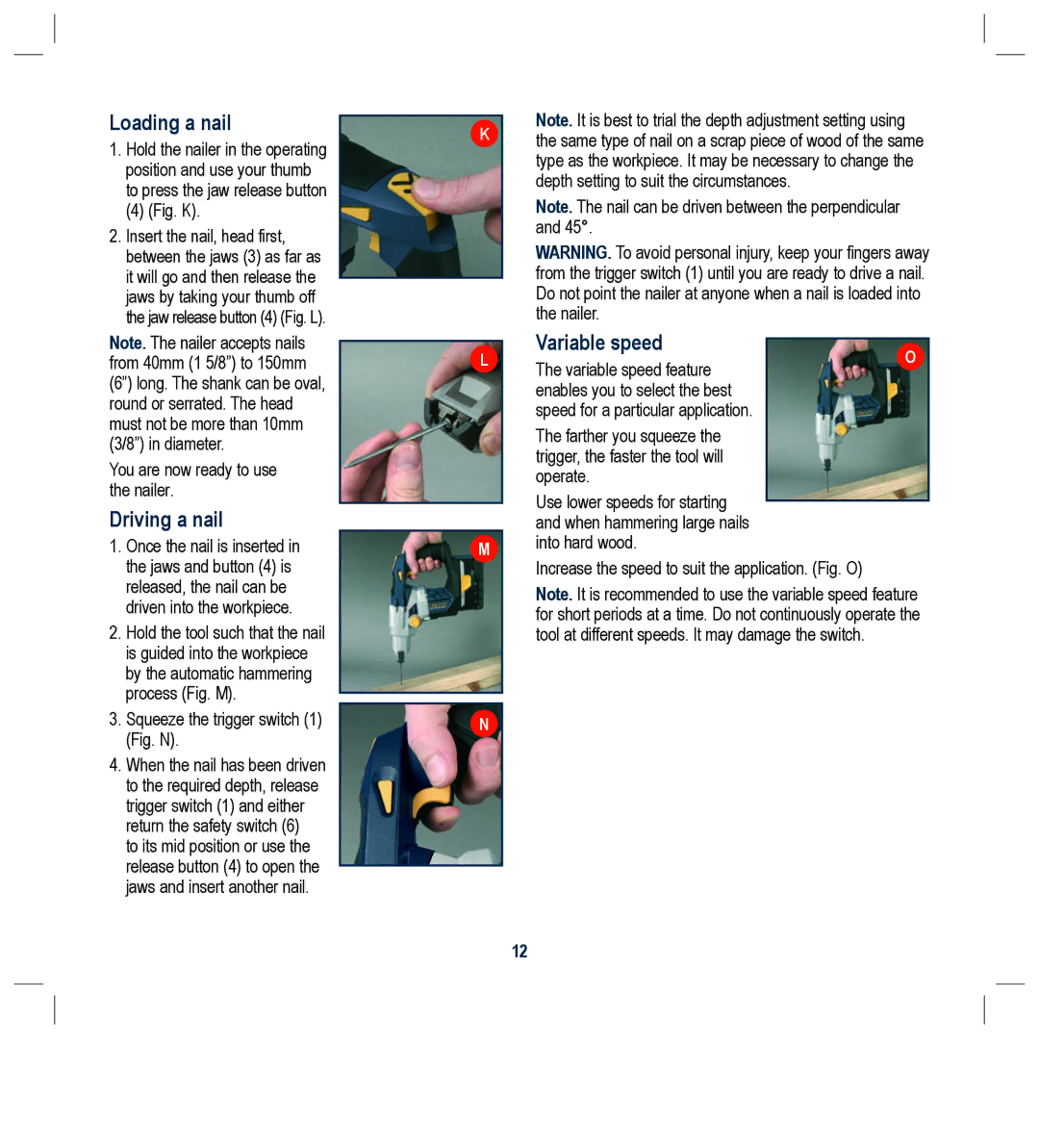
Loading a nail
1.Hold the nailer in the operating position and use your thumb to press the jaw release button
(4) (Fig. K).
2.Insert the nail, head first, between the jaws (3) as far as it will go and then release the jaws by taking your thumb off the jaw release button (4) (Fig. L).
Note. The nailer accepts nails from 40mm (1 5/8”) to 150mm (6”) long. The shank can be oval, round or serrated. The head must not be more than 10mm (3/8”) in diameter.
You are now ready to use the nailer.
Driving a nail
1.Once the nail is inserted in the jaws and button (4) is released, the nail can be driven into the workpiece.
2.Hold the tool such that the nail is guided into the workpiece by the automatic hammering process (Fig. M).
3.Squeeze the trigger switch (1) (Fig. N).
4.When the nail has been driven to the required depth, release trigger switch (1) and either return the safety switch (6)
to its mid position or use the release button (4) to open the jaws and insert another nail.
K
L
M
N
Note. It is best to trial the depth adjustment setting using the same type of nail on a scrap piece of wood of the same type as the workpiece. It may be necessary to change the depth setting to suit the circumstances.
Note. The nail can be driven between the perpendicular and 45°.
WARNING. To avoid personal injury, keep your fingers away from the trigger switch (1) until you are ready to drive a nail. Do not point the nailer at anyone when a nail is loaded into the nailer.
Variable speed
O
The variable speed feature enables you to select the best speed for a particular application.
The farther you squeeze the trigger, the faster the tool will operate.
Use lower speeds for starting and when hammering large nails into hard wood.
Increase the speed to suit the application. (Fig. O)
Note. It is recommended to use the variable speed feature for short periods at a time. Do not continuously operate the tool at different speeds. It may damage the switch.
12
